Calandrinia ciliata, Fringed Redmaids
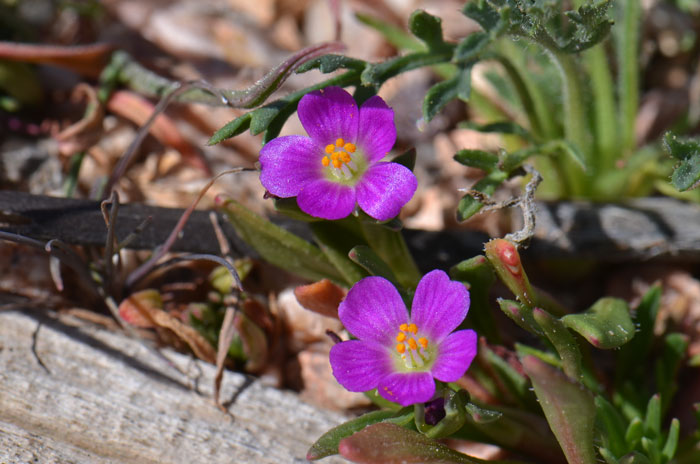
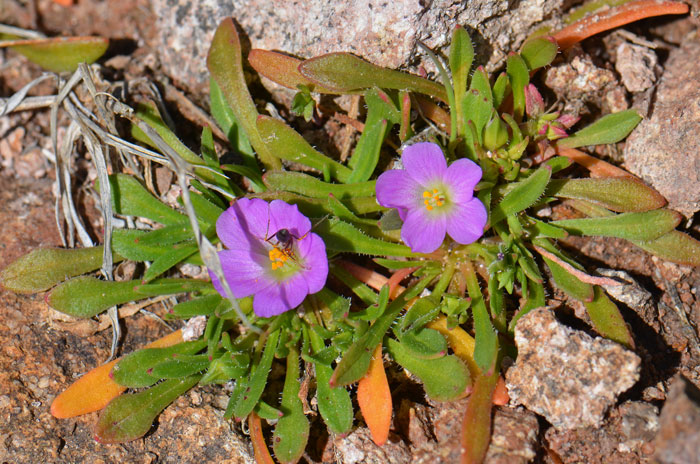
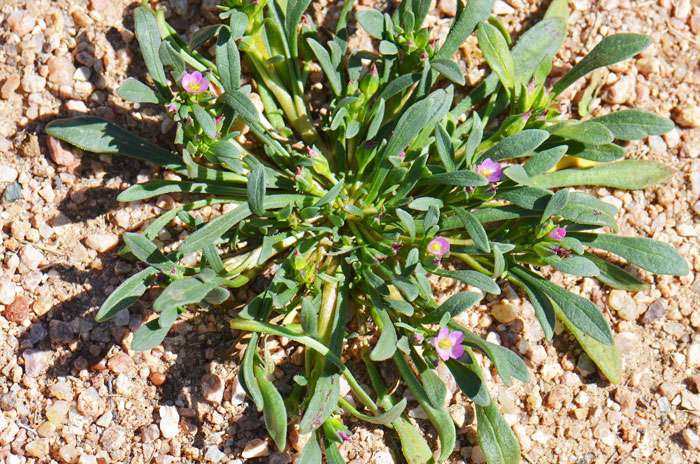
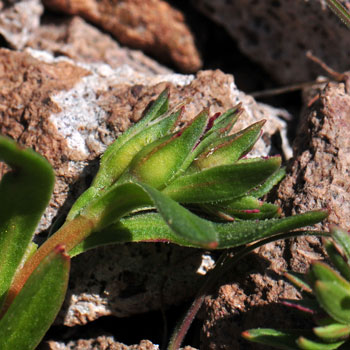
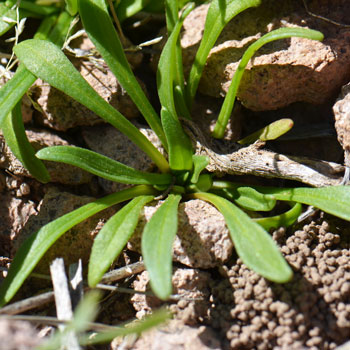
Scientific Name: Calandrinia ciliata
Common Name: Fringed Redmaids
Also Called: Desert Rockpurslane, Redmaids,
Rock Purslane
Family: Portulacaceae, Purslane Family
Note: The genus Calandrina is moving to the [1] Montiaceae Family.
Synonyms: (Calandrinia arizonica, Calandrinia ciliata var. menziesii, Calandrinia caulescens, Talinum ciliatum)
Status: Native
Duration: Annual
Size: Variable, to 7 or 8 inches to max of 15 inches.
Growth Form: Forb/herb; a small erect or ascending or spreading low growing plant; glabrous.
Leaves: Green; fleshy, alternate; narrowly to broadly lanceolate or linear or oblanceolate; variable vegetatively.
Flower Color: Rose-red, pink, rarely white; showy flowers with brilliant color in loose, leafy terminal short racemes, sepals 2, more or less pubescent with thick white hairs , petals 3 to 7 mostly longer than the sepals; fruit a longitudinally dehiscent capsule.
Flowering Season: February to March in Arizona and California; April to May in Texas.
Elevation: 1,500 to 4,000 feet; up to 6,500 feet in California.
Habitat Preferences: Sandy to loamy soils, grassy areas, cultivated fields, open forest and near desert edge.
Recorded Range: Calandrinia ciliata is found in the far western United States and Canada in; AZ, CA, ID, MA, NM, NV, OR, WA and BC, Canada. It is also native to Baja California, Mexico, Central America (Guatemala) and South America. In Arizona it occurs in Yavapai county and in the central and southern parts of the state with few or no records in Cochise county.
North America & US County Distribution Map for Calandrinia ciliata.
U.S. Weed Information: In North America Calandrinia ciliata can be weedy or invasive according to the following authoritative sources: Florida Exotic Pest Plant Council. 1999. Invasive plant list, Florida and the Western Society of Weed Science 1996. in cooperation with Cooperative Extension Services, University of Wyoming. Laramie, Wyoming.
Plants included here may become weedy or invasive.
Invasive/Noxious Weed Information: No information available.
Wetland Indicator: In North America Calandrinia ciliata has the following wetland designations:
Arid West, FACU; Atlantic and Gulf Coastal Plain, FACU; Northcentral & Northeast, FACU; Western Mountains, Valleys, and Coast, FACU.
FACU = Facultative Upland, usually occur in non-wetlands, but may occur in wetlands.
Threatened/Endangered Information: No information available.
In Arizona there are 2 species of Calandrinia, in California there are 4 species, New Mexico has 1 species, Nevada has 1 species, Texas and Utah each have 0 species. All data is approximate and subject to taxonomic changes.
The genus Calandrinia is moving to the [1] Montiaceae Family.
Comments: Red Maids is one of the early spring wild flowers of the southern deserts. Type of Calandrinia arizonica from near Tucson, Arizona (Pringle in 1881).
Red Maids have been or are used as food staple and unspecified purposes by North American indigenous peoples:
Costanoan Food, Staple, Seeds, in great quantities, used for pinole.
Luiseno Food, Unspecified, Seeds used for food.
Miwok Food, Unspecified, Oily, pulverized seeds pressed into balls and cakes for eating.
Numlaki Food, Staple, Tiny, jet-black seeds eaten as pinole.
See ethno-botanical uses at Native American Ethnobotany, University of Michigan, Dearborn.

